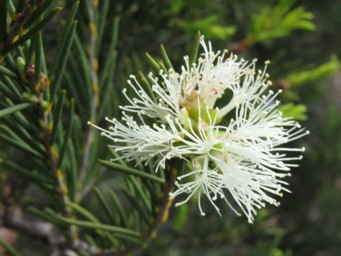Australia So Much to See
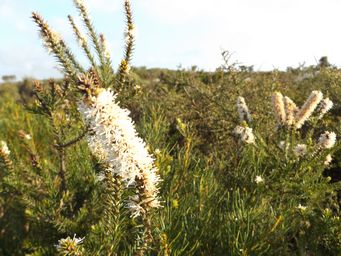
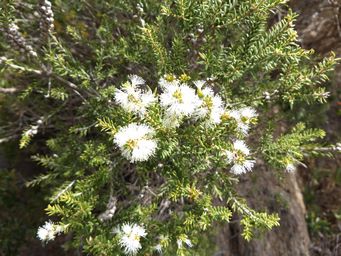
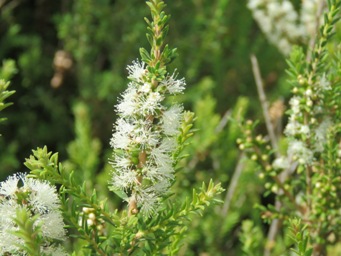
Melaleuca longistaminea 2010 (formerly Melaleuca cardiophylla var. longistaminea), Long-stamened Paperbark and Long-stamened Melaleuca.
Lime
green to yellow flower heads on the sides of the branches. The flower heads are up to four and a half centimetres across in diameter,
with five to fifteen individual flowers. Shrubs are many branched and grow up to two metres in height. Leaves alternative
up the smooth stems and are short, wide at base and tapering to a fine sharp point at the tip, recurving backwards. Leaves may
be edged with red, and rear of leave red tinged. New growth branchlets may be red.
August
Melaleuca radula, Graceful Honey-myrtle, white variation.
A pink, mauve or white Melaleuca with delicate open flower heads, with the green to yellow style on each flower being prominent. Shrubs may grow to 2.5 metres high, and foliage grows up the stems, mostly paired with each pair at right angles to the previous pair. Leaves are long and slender tapering to a point, and curve forward from the centre leaf vein.
August
Wongan Hills, Wheatbelt region, Western Australia. Grows through the western
Mid West, through the Wheatbelt, and into western parts of the Goldfields.
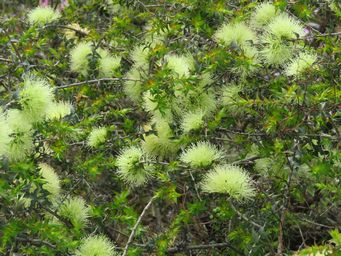

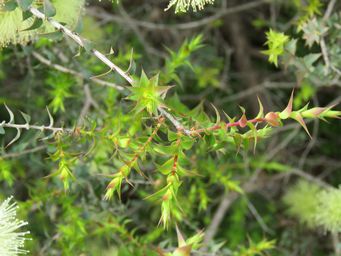
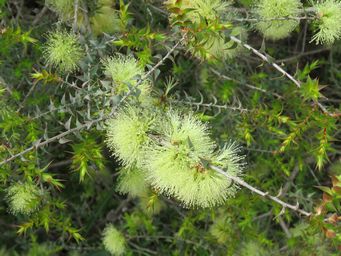


Melaleuca nematophylla, Wiry Honey-myrtle
Round pink fluffy flowers on a low growing shrub with needle like leaves. This specimen
as at the end of its flowering season and browning off.
This is similar to Melaleuca filifolia, Wiry Honey Myrtle. The fruits
of Melaleuca nematophylla are said to be in an irregular peg-like cluster, while the fruits of Melaleuca filifolia are said to be
in a distinct "soccer-ball" formation. No fruit was observed.
August September
Marchagee Nature Reserve, Wheatbelt region and
Kalbarri and Tardun in the Mid West region, Western Australia.
Melaleuca nematophylla occurs through the Mid West, northern
Wheatbelt and into the western edge of the Goldfields region.
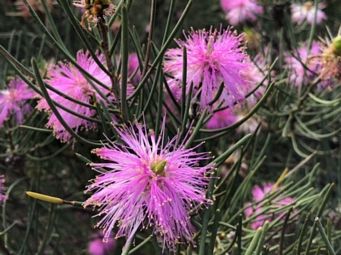
Melaleuca filifolia occurs through Mid West in areas north of Geraldton, so the Kalbarri specimen could be either species.
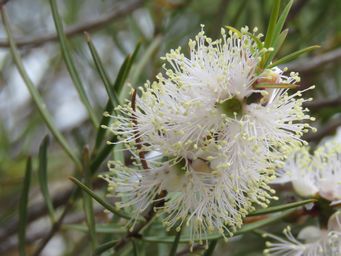
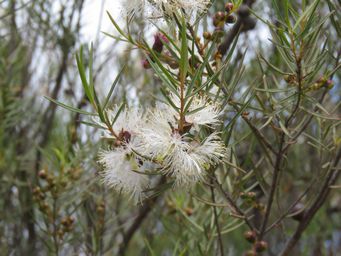
Melaleuca fulgens subsp. steedmanii, Scarlet Honey Myrtle. In 1990 Melaleuca fulgens was split into three subspecies.
Large
red flowering Melaleuca shrub, growing up to three metres tall. Clusters of vivid red flowers with yellow anthers. Base
of each flower is spotted. Can be found in shades of pink. Leaves are edged in reddish tan, and are oblong and terminate
in a slightly point tip and mostly opposite.
August
Tardun, Mid West region, Western Australia, and found in areas
of the Mid West and the Wheatbelt.

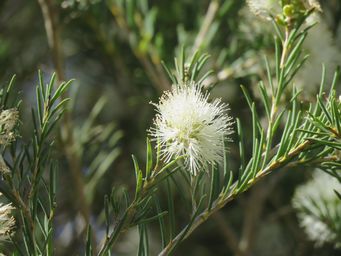
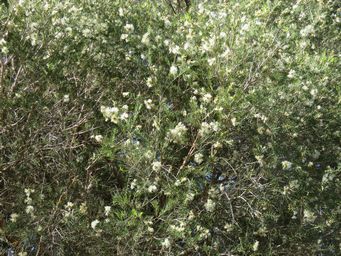
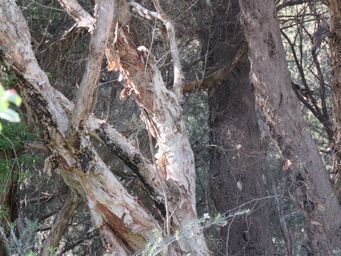
Melaleuca rhaphiophylla, Swamp Paperbark, Freshwater Paperbark, Yowarl, Bibool Boorn, Yiembak.
A tall paperbark tree which grows up
to ten metres, which grows along watercourse or in swamps. Salt tolerant. Small white bottlebrush flowers. Foliage
long and needle-like, and leaves alternating.
Rhaphis means needle and phylla means leaves.
Seen in November, but can
flower at other times of year.
Boyup Brook, and common in wet or damp areas close to the coast from Kalbarri to Ravensthorpe,
and extending inland through much of the Wheatbelt, South West and Great Southern regions
